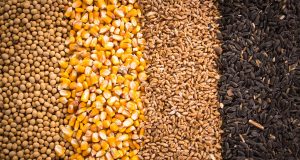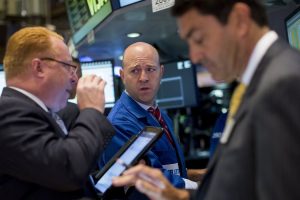Value Stocks And Event Risk When Trading ETFs and ETNs
Today I had a cup of coffee, some oats and orange juice for breakfast.
And you know what?
Outside of this being a nutritious meal these are tradable assets.
They can either be traded as value stocks on the futures market or through the equity markets, via ETFs and ETNs.
Commodities are called “hard assets” and are typically categorized in these groups: Softs, Meats, Grains, Metals and Energies.
Softs: cotton, orange juice, sugar, cocoa and cotton.
Meats: live cattle, feeder cattle and lean hogs. 
Grains: wheat, corn, soybeans, soybean meal, soybean oil, oats and rough rice.
Energy: crude oil, brent crude, heating oil, gasoline, natural gas and ethanol.
Metals: gold, silver, copper, platinum and palladium.
Commodity prices are driven by the forces of supply and demand. We can also say that they’re hedges against inflation when trading value stocks. During periods of inflation, commodities help preserve purchasing power.
Now, if you decide on trading ETFs or ETNs on these hard assets… it’s important that you become familiar with the event risks involved. Of course, it’s not a one size  fits all type of thing, so let’s take a look at some of the event risks that traders should think about when trading value stocks in commodity ETFs or ETNs.
fits all type of thing, so let’s take a look at some of the event risks that traders should think about when trading value stocks in commodity ETFs or ETNs.
Event Risk #1: Weather
As mentioned earlier, commodity prices are driven by supply and demand forces. Of course, weather can play a major role. For example, floods in India could affect cotton supply (one of the world’s largest producers) and cause prices to shoot up. Bad weather has the potential to cause supply disruptions. In 2005, Hurricane Katrina caused damage to U.S. oil refineries in the Gulf of Mexico…causing crude oil prices to skyrocket.
Event Risk #2: Economics & Policy with Value Stocks
During periods of fear…investors will get out of risky assets, like stocks, and flock towards “safe havens” like bonds and gold. In 2011, Gold hit a record high because of fears that the European debt crisis would create massive inflation. Gold is very unique in that is seen as a hedge against inflation as well as a safe haven. Silver on the other hand, does not have that distinction.
 Always ask yourself what things mean in terms of supply and demand. For example, let’s say that China’s economy is showing signs of slowing down. What do you think that’s going to do the price of crude oil? This will most likey cause prices to shift sideways or down.
Always ask yourself what things mean in terms of supply and demand. For example, let’s say that China’s economy is showing signs of slowing down. What do you think that’s going to do the price of crude oil? This will most likey cause prices to shift sideways or down.
With that said, one of the key tools that central banks have is the ability to make changes to interest rates. Policy changes can affect commodities and stocks greatly if they’re not anticipated by the markets. Generally, central banks will try to prepare markets before they make significant changes to key interest rates in value stocks.
Event Risk #3: Geopolitical Risk
Commodities are natural resources…their prices are vulnerable to shocks…especially in countries in which they’re large suppliers or consumers of the product.
For example, back in March of 2104, Brent Crude oil prices spiked because of fear that Russia’s Vladimir Putin might cut gas flow. In May of 2014, Crude oil prices traded above $100 per barrel…due to concerns of tensions escalating in the Ukraine.
Summary
Now, if you’re trading value stocks that are highly correlated to commodities it’s important to be aware of the added volatility. For example, if the FOMC has a meeting announcement, it shouldn’t be a big surprise to see greater volatility in gold miners or gold ETFs. With that said, if there is uncertainty leading up to the event, it might make sense to lighten up your position or even hedge.
